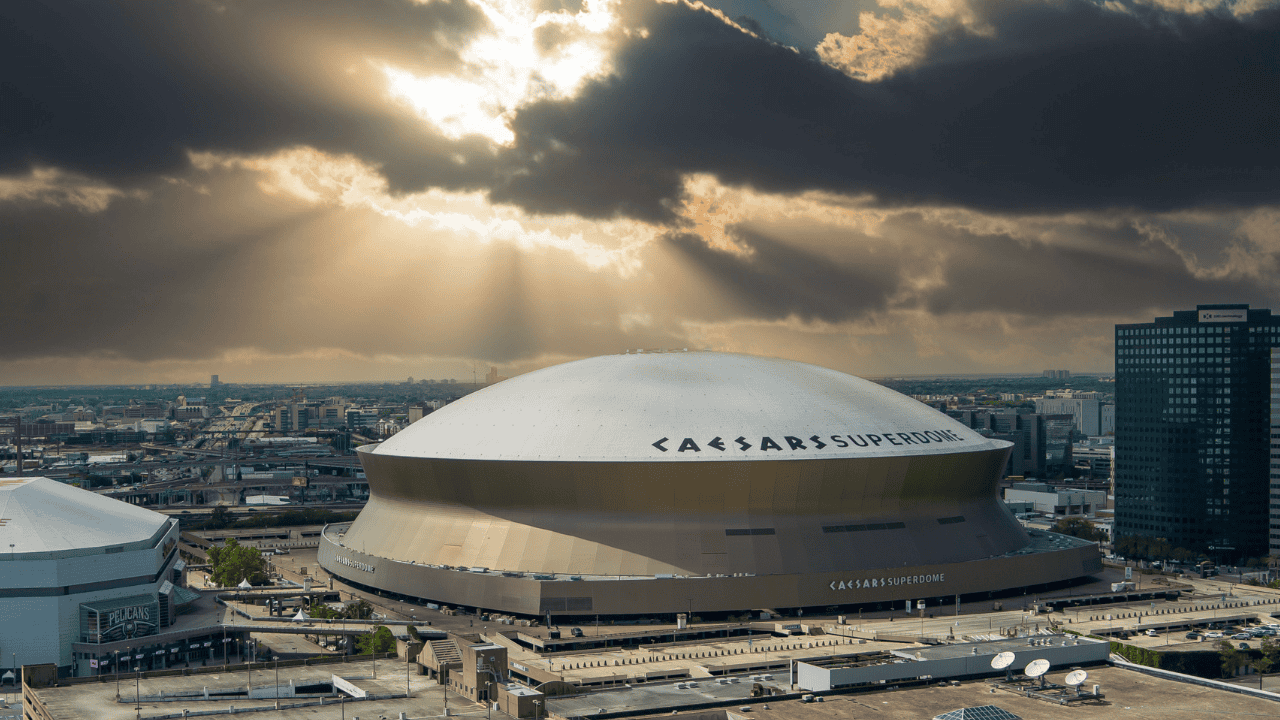The Super Bowl is one of the biggest annual sporting events in America. This year, it takes place on Feb. 9 in New Orleans at the Caesars Superdome, which has capacity for up to 83,000 spectators.
New Orleans has hosted 10 Super Bowls, with the 2013 game bringing in $480 million to the local economy, according to a study from the University of New Orleans.
With thousands of people flooding into Louisiana’s largest city for the big game, law enforcement and partnering organizations are focusing strategic efforts on preventing human trafficking at the Super Bowl.
When it comes to Super Bowl human trafficking statistics, there is no data to support reports of this crime increasing around the game each year. However, where there are more people, there are more opportunities for trafficking to happen.
Here’s what we DO know about human trafficking at the Super Bowl
Human trafficking is a global pandemic, and the United States is no exception. In fact, according to Polaris, human trafficking has been reported in all 50 states as of 2024, and sex trafficking is the most common form.
In 2024, the Louisiana Annual Human Trafficking Data Report revealed that 1,734 confirmed and suspected survivors received services in 2023—a 57% increase from the previous year. Of these, 86% were survivors of sex trafficking.
The Trafficking Victims Protection Act (TVPA) of 2000 forbids labor and sex trafficking, therefore claims of human trafficking in Louisiana are frequently heard in federal court. Louisiana criminalizes human trafficking under La. R.S. 14:46.2 (human trafficking) and La. R.S. 14:46.3 (trafficking of children for sexual purposes). Penalties for these crimes can vary and human trafficking often carries severe prison sentences, including life imprisonment for cases involving minors.
New Orleans has been grappling with heightened security concerns following the recent truck attack. Ever vigilant, local and federal law enforcement is reinforcing their efforts to prepare for this major event. Partnering organizations and the National Football League (NFL) also are preparing accordingly.
- Ahead of Super Bowl LIX, NFL stars have teamed up with major hospitality and sports organizations to support its global awareness campaign “It’s a Penalty: Harnessing the Power of Sport to Combat Human Trafficking.” The campaign educates the public on how to recognize the signs of trafficking, how to report suspected cases, and how to support survivors. It targets high-risk areas such as travel, hospitality, and tourism environments, with content reaching key locations, including hang tags for rideshares, partnership with public transport providers, and materials for hotel staff and guests.
- The Louisiana Governor’s Office created a PSA in partnership with the New Orleans Saints, Cox Communications, and the Blue Campaign to raise awareness about human trafficking.
- Homeland Security Investigations (HSI) New Orleans hosted a human trafficking awareness workshop in September of 2024, supported by the Department of Homeland Security’s (DHS) Center for Countering Human Trafficking and the Blue Campaign. Over 200 people attended, including state and local law enforcement, federal prosecutors, leaders from nongovernmental organizations, and personnel from the hospitality industry.
The fight against suspected Super Bowl human trafficking in New Orleans will be a collective effort. Local law enforcement, politicians, hospitality companies, and nonprofits are in it together.
We invite you to learn more about the signs of human trafficking in adults and youth, so you know how to identify it.
Signs in adults could look like:
- Having inconsistencies in their story.
The person may tell you conflicting information or sound confused.
- Being unable to provide identification.
They may not have an ID, or someone (like an employer) is “holding” it for them.
- Being unsure of their location.
They may be unable to clarify where they are staying or how to get there.
- Avoiding eye contact or allowing someone to speak for her/him.
They may defer to another person before giving information.
- Exhibiting fear, paranoia, or anxiety.
They may avoid eye contact and be fearful of law enforcement/or government authorities.
Signs in youth can look like:
- Running away/couch surfing.
Kids are vulnerable to trafficking when they have housing insecurity, have been abused at home, or are kicked out by their families.
- Unexplained behavioral changes.
They start being absent or truant. They may withdraw from relationships, school, and other important aspects of life.
- Using unfamiliar or “street” terminology.
They may start using phrases like “the game,” “the life,” or “handler/manager.”
- Suspicious injuries or conditions.
Sex trafficked kids are regularly treated for drug/alcohol abuse, STDs, pregnancies, or injuries (including bruises, cuts, or other signs of physical abuse).
- Sudden appearance of expensive gifts.
They may say friends gifted them cash, revealing clothing, electronics, or purses.
At Our Rescue, we champion and empower the efforts of law enforcement all around the world with the tools and resources they need to combat these heinous crimes. You can help make a difference by sharing this article with your friends and family, sparking important conversations.
